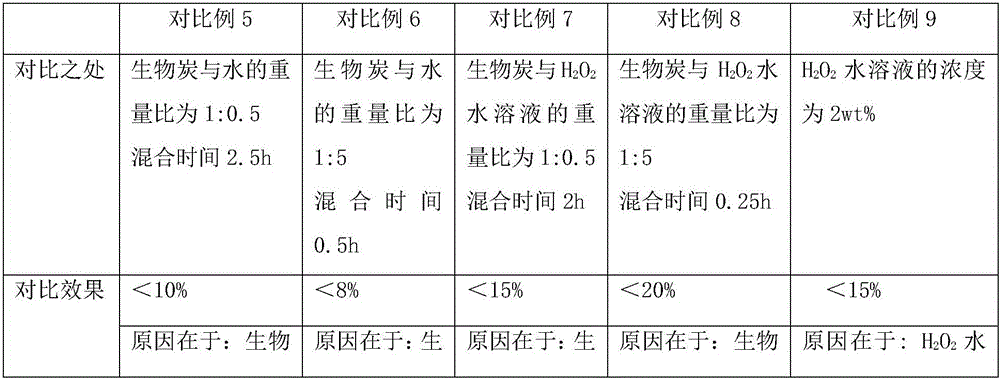Method for controlling atmospheric emission loss of fumigant on basis of animal dung biochar
A technology of animal feces and biochar, applied in botany equipment and methods, plant protection, horticulture, etc., can solve the problems of air pollution by fumigants, harm to human body, secondary pollution, etc., to reduce the risk of secondary pollution, The effect of solving the dust risk and increasing the contact time
- Summary
- Abstract
- Description
- Claims
- Application Information
AI Technical Summary
Problems solved by technology
Method used
Image
Examples
Embodiment 1
[0032] Cow dung biochar obtained by pyrolysis at 300°C is mixed at 200 / min at a mass ratio of biochar: water = 1:3 for 2 hours to obtain activated biochar, and it is covered on the soil surface and added 1-3cm Thick, 1,3-dichloropropene was applied to the soil by the injection method commonly used in agriculture, and the control experiment was unactivated cow dung biochar obtained by pyrolysis at 300 °C. Determination of the degradation rate of 1,3-dichloropropene in biochar. The results are shown in Table 1.
[0033] Table 1
[0034] deal with
Embodiment 2
[0036] Cow dung biochar obtained by thermal cracking at 400°C is mixed at 200 / min for 2 hours at a ratio of mass ratio biochar: water = 1:3 to obtain activated biochar, and cover the soil surface with 1-3 cm Thick, 1,3-dichloropropene was applied to the soil by the injection method commonly used in agriculture, and the control experiment was unactivated cow dung biochar obtained by pyrolysis at 400 °C. Determination of the degradation rate of 1,3-dichloropropene in biochar. The results are shown in Table 2.
[0037] Table 2
[0038] deal with
Embodiment 3
[0040] Cow dung biochar obtained by pyrolysis at 500°C is mixed at 200 / min for 2 hours at a mass ratio of biochar: water = 1:3 to obtain activated biochar, and it is covered on the soil surface and added 1-3cm Thick, 1,3-dichloropropene was applied to the soil by the injection method commonly used in agriculture, and the control experiment was unactivated cow dung biochar obtained by pyrolysis at 500 °C. Determination of the degradation rate of 1,3-dichloropropene in biochar. The results are shown in Table 3.
[0041] table 3
[0042] deal with
PUM
 Login to View More
Login to View More Abstract
Description
Claims
Application Information
 Login to View More
Login to View More - R&D
- Intellectual Property
- Life Sciences
- Materials
- Tech Scout
- Unparalleled Data Quality
- Higher Quality Content
- 60% Fewer Hallucinations
Browse by: Latest US Patents, China's latest patents, Technical Efficacy Thesaurus, Application Domain, Technology Topic, Popular Technical Reports.
© 2025 PatSnap. All rights reserved.Legal|Privacy policy|Modern Slavery Act Transparency Statement|Sitemap|About US| Contact US: help@patsnap.com



